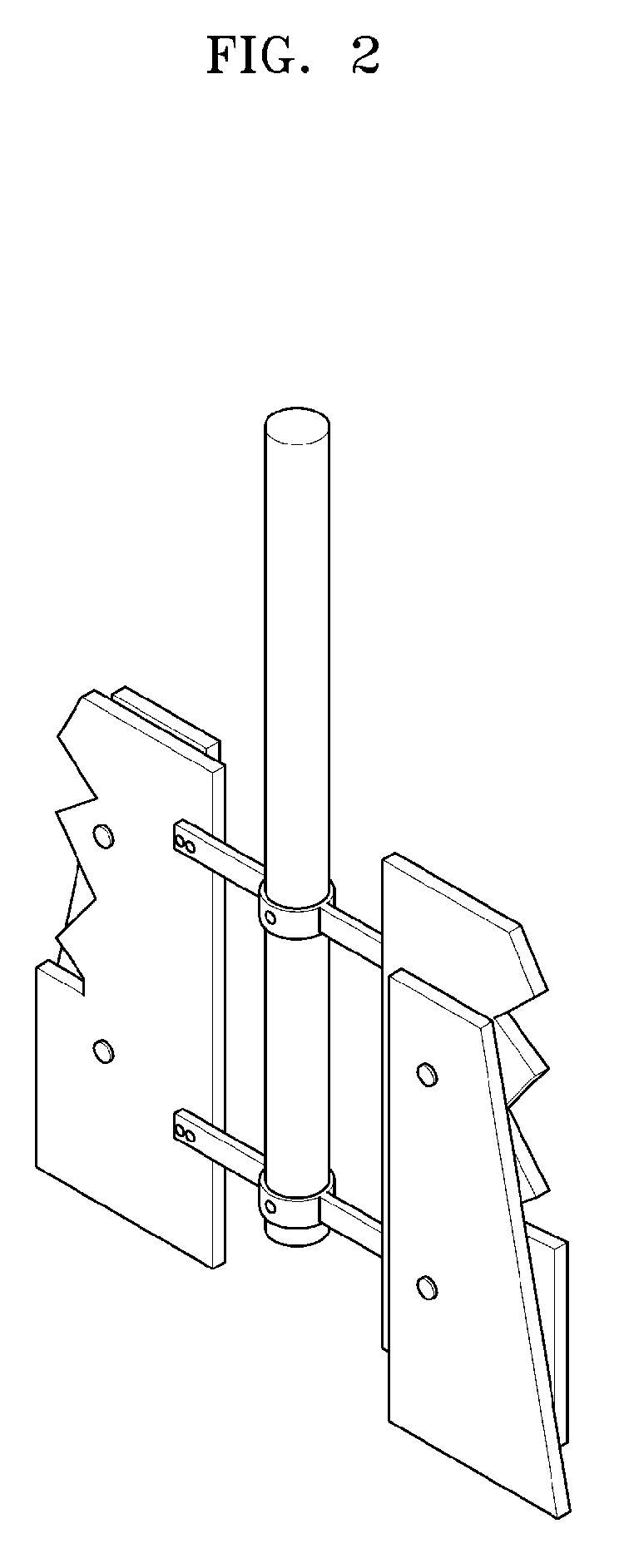Method of Preparing Wholly Aromatic Polyester
a technology of aromatic polyester and polyester, which is applied in the direction of tyre parts, chemical/physical processes, vehicle components, etc., can solve the problems of poor insulation, poor stirring effect, contact point of metal, etc., and achieve excellent mechanical and thermal properties, uniform properties, and reduced amount of byproduct gases
- Summary
- Abstract
- Description
- Claims
- Application Information
AI Technical Summary
Benefits of technology
Problems solved by technology
Method used
Image
Examples
example 1
[0102]A double plate type stirring impeller (Hado Co. Ltd.) in a trapezoid shape having the length of 30 cm and the diameter of 15 cm, wherein a L / D ratio of the stirring impeller was 2 and a distance between the bottom of the reactor and a lower portion of the stirring impeller was 1 cm was installed in a 10 liter reactor. 1797 g of para hydroxy benzoic acid, 808 g of biphenol, 540 g of terephthalic acid and 180 g of isophthalic acid were introduced into the reactor, and 1.06 equivalent weight of anhydrous acetic acid was introduced into the reactor and the reactor was stirred at a power per unit volume of 20 kW / m3.
[0103]The mixture was polymerized until a viscosity in the reactor reached a predetermined level of 5000 Pa.s, and acetic acid, a byproduct, was distilled under atmospheric distillation conditions. Then, the mixture was discharged, pulverized, and introduced into a solid state reactor to prepare wholly aromatic polyester. The obtained wholly aromatic polyester and glass ...
example 2
[0104]An experiment was performed in the same manner as in Example 1, except that the power per unit volume was 15 kW / m3. The results of the flow temperature, the melting point, and the amount of generated byproduct gas are shown in Table 1.
example 3
[0121]171 g of para hydroxy benzoic acid, 114 g of biphenol, and 100 g of terephtalic acid were introduced into a 1 liter reactor having a stirring device, a nitrogen gas inlet, a thermometer and a reflux condenser, and nitrogen was injected to substitute the air in the reactor. 264 g of anhydrous acetic acid was added thereto, and the reactor was stirred at a rotational frequency of 200 rpm. The temperature of the reactor was increased to 150° C. for 30 minutes, and acetylation was performed for 3 hours. Then, the temperature was increased to 340° C. for 5 hours while acetic acid, a byproduct, was discharged, and the temperature was maintained for 30 minutes, and then the products was discharged and pulverized. The weight loss initiating temperature and the melting point of the obtained low molecular weight polymer were measured, and the low molecular weight polymer was introduced into a solid state reactor, and the temperature was increased to the weight loss initiating temperatur...
PUM
| Property | Measurement | Unit |
|---|---|---|
| Temperature | aaaaa | aaaaa |
| Temperature | aaaaa | aaaaa |
| Temperature | aaaaa | aaaaa |
Abstract
Description
Claims
Application Information
 Login to View More
Login to View More - R&D
- Intellectual Property
- Life Sciences
- Materials
- Tech Scout
- Unparalleled Data Quality
- Higher Quality Content
- 60% Fewer Hallucinations
Browse by: Latest US Patents, China's latest patents, Technical Efficacy Thesaurus, Application Domain, Technology Topic, Popular Technical Reports.
© 2025 PatSnap. All rights reserved.Legal|Privacy policy|Modern Slavery Act Transparency Statement|Sitemap|About US| Contact US: help@patsnap.com



